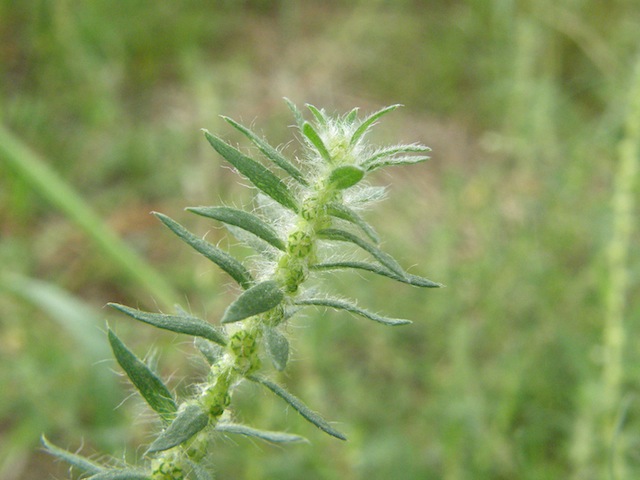Description:
Plant:
Upright, sparsely branched, plant with leafy, hairy, often reddish stems, 1'-4' high,
with many, small, narrow leaves, and inconspicuous, greenish, star-shaped flowers in the leaf axils.
Annual.
Flowers:
Small, greenish or whitish, 1/4", starlike, with 5 petal-like sepals,
mostly in small clusters in the leaf axils.
Leaves:
Alternate, linear to lanceolate, smooth-margined, sessile, 1/2"-2", hairy, hairs often quite long.
Often densely packed on stems.
Fruit:
Small, 1-seeded.
Blooming:
August-October
Habitat:
Fields, Waste areas, roadsides.
Comments:
Native to Eurasia, this plant is widely naturalized across North America.
It is sometimes planted for forage and erosion control, especially in dry areas,
and some varieties are grown as ornamentals.
It is slightly toxic to cattle when used as the sole forage for extended periods, but is useful
mixed with other plants.
The seeds are edible, and are cooked and eaten whole in Japan under a name that
translates as "field caviar".
In some areas, the dry, mature plants detach, and are blown about by the wind, spreading seed
as "tumbleweeds".
Where to find it:
A large patch grows under the overpass at the east end of the park.
Also scattered in other waste or rocky areas.
